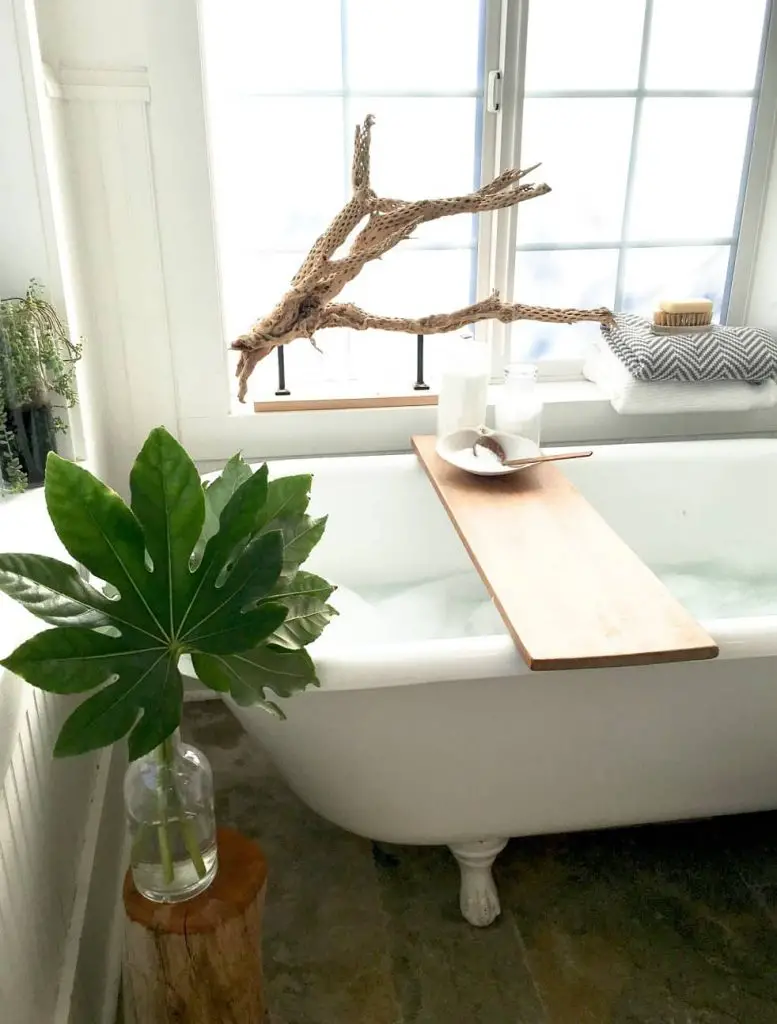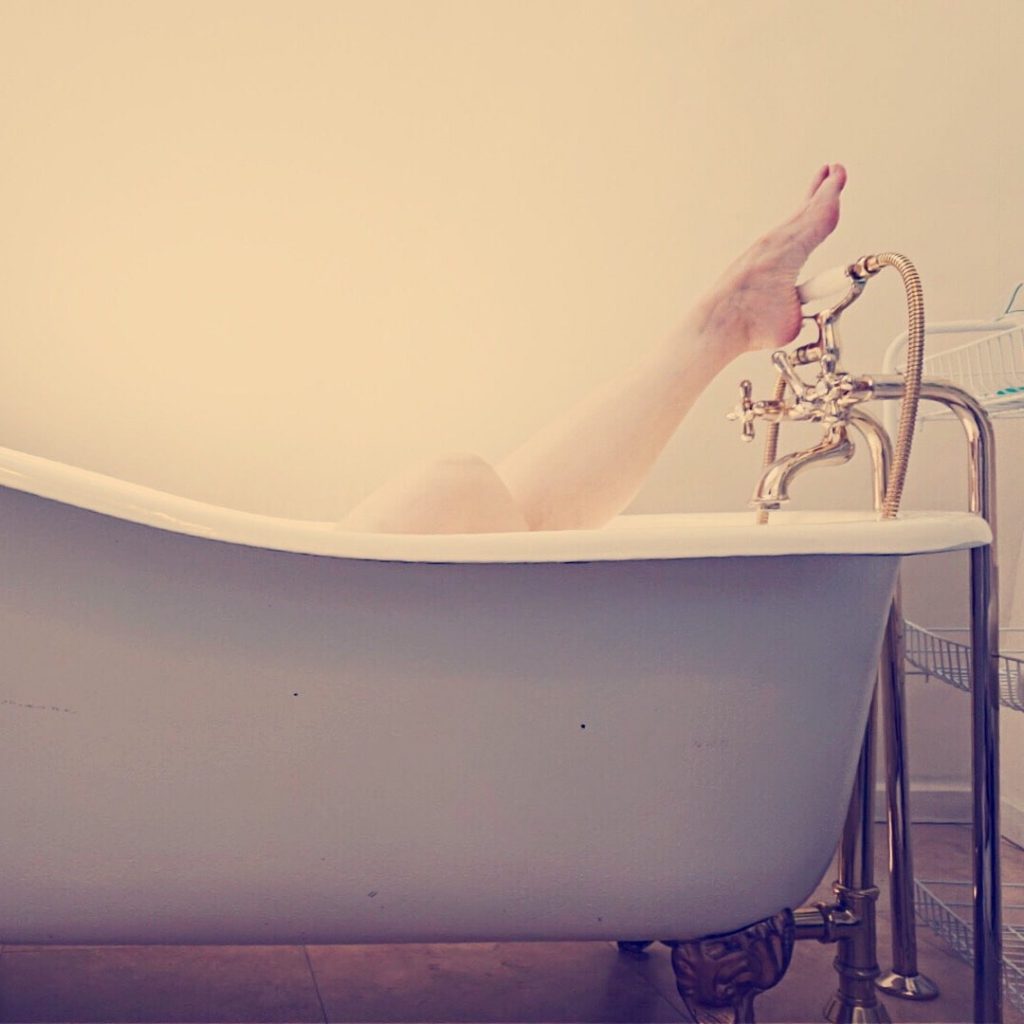There’s no denying that you probably have a lot of old treasures hidden away at home.
Some of those things may have been passed down from generation to generation. Some of those things may have ended up in a nasty storage unit that no one has opened for years.
Yes, there’s a reason why there is even a purpose in doing those programs. A couple of people go around to various storage units across the country and bid on their contents without seeing what is inside.

A lot of this stuff could be worth an absolute fortune when it has been rescued, perhaps refinished with a new coat of paint.
There will also be a lot of the stuff that ends up being stored in storage units. It won’t be worth salvaging because it is more of a headache than anything.
Maybe you have one of those old clawfoot tubs. There is a good reason why you may want to take the time to refinish and paint it. In this article, we will be talking about the process.
When you start looking online, there are other articles where people have rescued these things and given them a new life. They end up looking stunning.
Suppose that is what you want to do, great! However, it’s not quite as simple as it seems.
One of the main challenges of this type of tub is that it was made in an era where lead paint was very common. You will have to test whether or not it was used in this tub before you start doing any actual work on it.
Suppose you are currently living in an old rental unit with many original appliances still in it. In that case, you may also want to get those tested out.
Make sure that your landlord is living up to the various obligations that he or she has to inform you about your rights. Also, ensure that the place has been adequately tested for lead paint.
We usually blog about how hairline cracks can be an issue. We also have many other articles, like the one on XRF machines.
This article on refinishing clawfoot tubs is just an extension of these various articles. It is created to ensure that you and the ones you love are safe from the devastating effects of lead.
We would not want you to go about painting an old tub to realize that you ended up inhaling a bunch of this dangerous dust in the process.
Let’s go ahead and get on with the topic of how you can put some new life into that old clawfoot bathtub. It has been hanging around your house for too long before getting the new life it deserves.
End up going the route of buying an old house. It could be that it comes with a bathtub that might have been very visually appealing back when originally installed.

Given that the house was not kept up over time, it deteriorated. Like the article that we previously linked to, you can see the ceiling coming down as well.
What’s important to mention is that refinishing one of these objects in an old home comes with challenges. They’re the same challenges that you will be experiencing when trying to bring an old radiator back to life.
First, you will need to find a way to strip away the paint. Then you will need to find a suitable way of bringing it into this century and bringing up to speed all the surrounding components. It’s like the rest of the bathroom.
There are definite situations where you may want to buy an old home rather than build a new one. Having one of these bathtubs may be one of the charms that help you make up your mind.
If you haven’t already, read our article on whether it’s cheaper to buy an existing home or whether you should go out and try and build one instead.
To get started with the information on refinishing an old tub, you must take certain safety precautions.
Contents
- Safety measures
- Refinishing a cast iron tub
- Paint stripping
- Avoid health dangers
- The regulations
- Other lead sources
Safety measures
There are a lot of safety standards that weren’t the same back in the day.
These include the manufacturing of consumer products. Many people do not realize they may still have many dangerous products lying around their homes. The risk of lead exposure is rather significant, as an old bathtub is just one of them.
Why is it especially important that you test a bathtub for lead? Certain conditions will cause paint to deteriorate faster. You may still be finding certain products around your home where the paint contains lead. However, it is only dangerous when the surface is disturbed or deteriorating.
When you are going about revamping an old bathtub like that, there’s no denying that you will be disturbing the old paint.
You can’t simply paint on top of an old surface. It is usually in poor condition anyway when you want to refinish it when it gets to the stage.
First, you will need to remove the old paint from the tub. While there is a range of ways to be done, they all have in common that the paint will be disturbed.
You should take safety precautions when you find out that it has lead in it. It is similar to how you would take safety precautions when you are encapsulating lead paint on the walls of your home.
Refinishing a cast iron tub
You may consider sanding down the tub before you get started. We want to point out a couple of reasons you may want to be careful if that is the way that you choose to do it.
It’s very easy to go down to your local home improvement store and pick up a sanding tool. It is also the easiest way to ensure that you are spreading as much lead dust around the room as absolutely possible. That is, at least if the bathtub has been proven to contain lead paint.
An alternative that we recommend is to use one of these paint strippers for the purpose instead. It has a significant amount of advantages for removing old paint while still keeping your family safe.
Be aware that when you are sanding down an old cast iron tub, you aren’t just exposing yourself to the potential dust. It is thrown all over the place when it is happening. Lead dust can be very dangerous if not handled properly.
Suppose you aren’t carefully protecting yourself and your home. In that case, all the dust can settle on various surfaces. It can then subsequently be inhaled and accumulate in your system. At this point, it becomes a danger to your health.
You may have thought that you were adequately protecting yourself in the process. More measures need to be taken to ensure that your bathtub remodeling project doesn’t end up causing elevated lead levels.
This is especially the case when you have a child who lives in the same home!
Children are a lot more at risk than adults regarding lead exposure. This can lead to a range of really unfortunate life-lasting consequences like developmental delay when exposed to lead.
It can also cause kidney damage and more. Even if you may not be too concerned with exposure to this potentially harmful type of paint, at least keep your kids safe. Consider proper protective measures for the sake of keeping your kids safe.
Paint stripping
Ideally, you should not begin the paint removal process when the tub is standing somewhere where it is easy for lead particles to settle.
You should be putting it in an area that is easy to seal off with plastic sheeting. Make sure that you can easily throw away the plastic when you are done with the project.
When you are using a sander rather than removing the existing layers of paint with a chemical solution, there are other problems.
Sanding a surface area will usually cause the surface to become dry. At that point, a lot more dust is spread into the room. It happens with the turning motion of the sander.
On the other hand, the chemical solution that we talked about previously will adequately address the different layers of paint. At that point, they will easily come off. Make sure that you are following the manufacturer’s recommendations in either case.
We would also like to caution as we have seen other sites not recommend taking proper precautions.
You should both seal off the entire space you are working on and wear the necessary protective headgear. It includes the necessary lead respirator.
If you choose to do this type of work yourself and use a HEPA vacuum when you are done with the process.
This will ensure that you can properly clean up the area. Ensure that those nasty particles may have gone places where they shouldn’t and are being properly cleaned up. Check out the next part of this with our article on the best chemical cleaners for the job.




